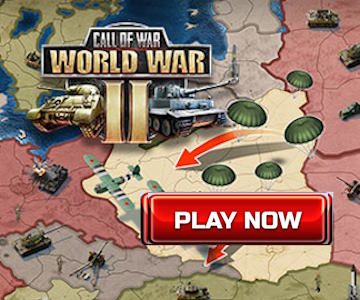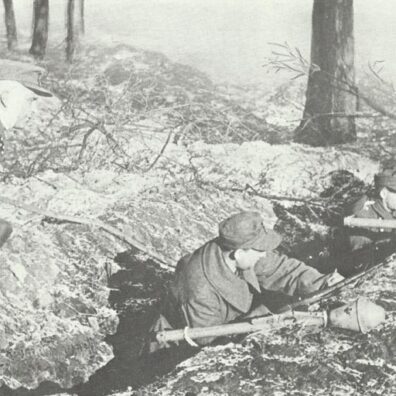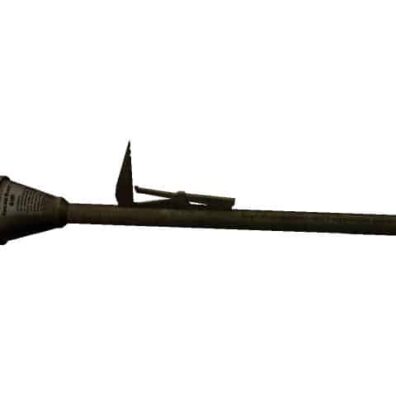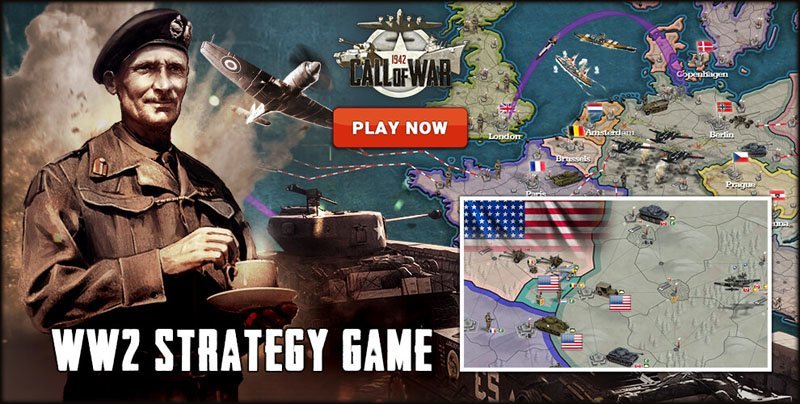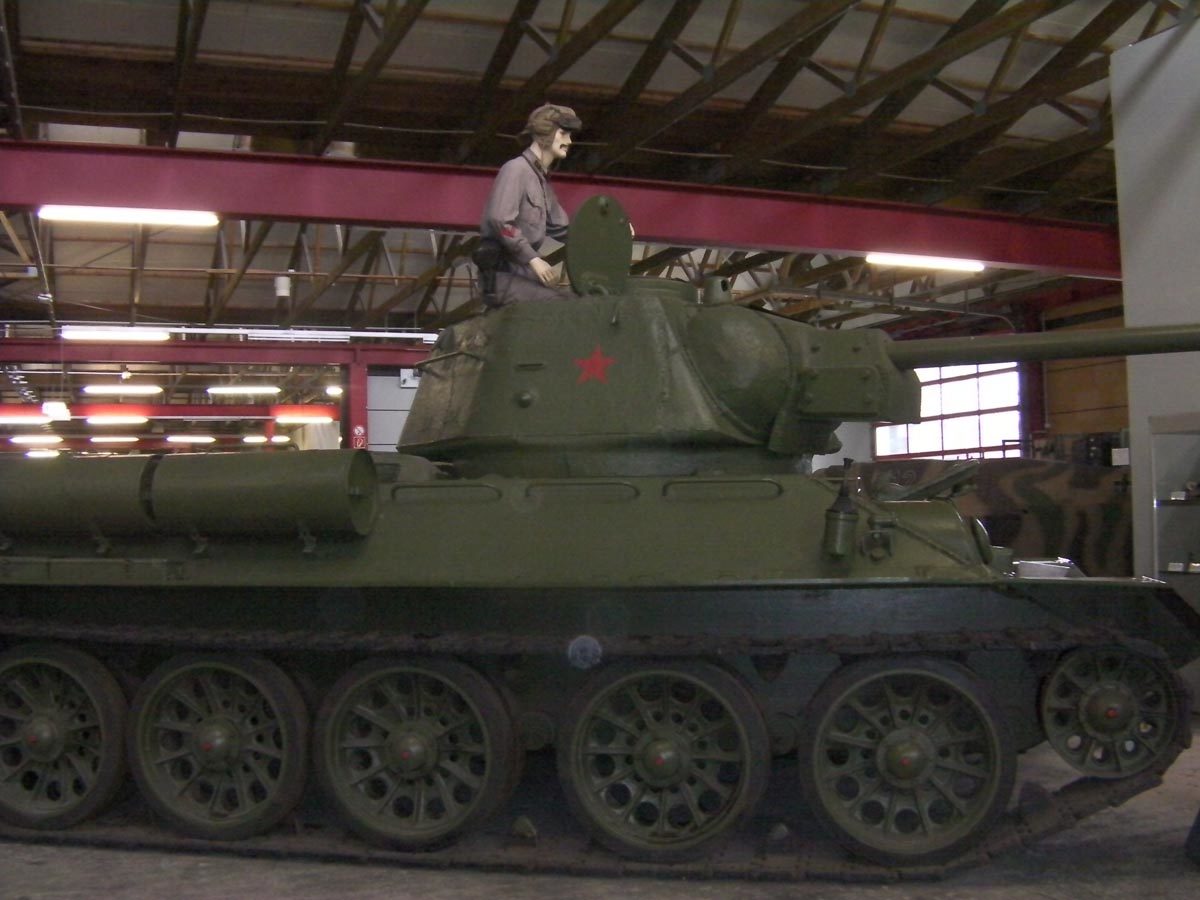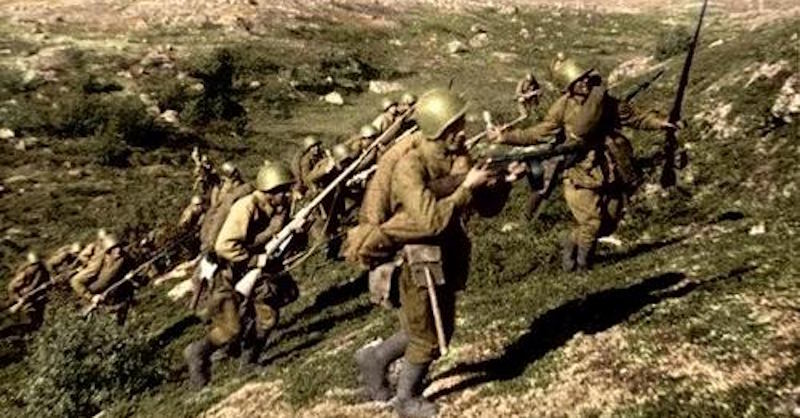One-shot recoilless anti-tank launcher.
History, development, service, specifications, pictures and 3D model.
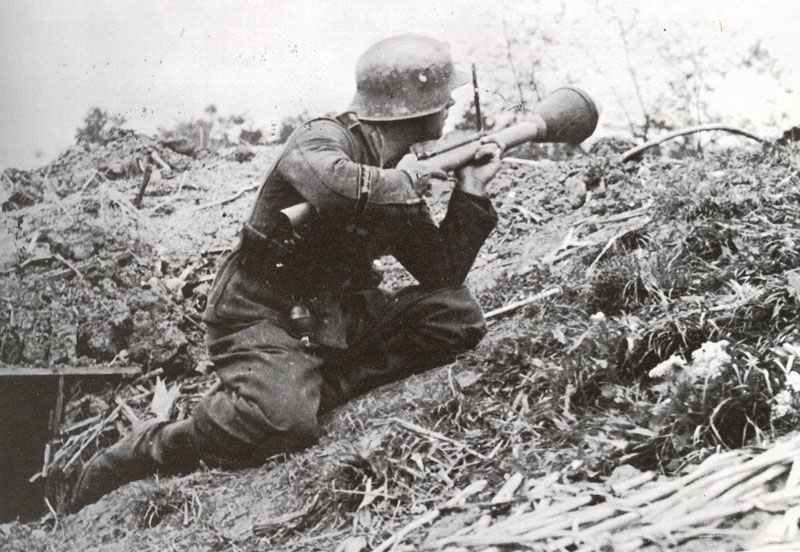
Panzerfaust 30 to 250
Table of Contents
Panzerfaust 30, 60, 100, 150, 250.
Type: light, one-shot recoilless anti-tank launcher
The Panzerfaust was a single-shot, disposable anti-tank weapon developed by Germany during World War II.
Key Characteristics:
– Simple, inexpensive design
– Recoilless launch system
– Single-shot, disposable
– Man-portable
– No formal training required to operate
Technical Details:
– Consisted of a small diameter tube with a larger diameter at the business end
– Used a shaped-charge warhead
– Operated on the recoilless principle
– Effective range varied by model (30-60 meters typical)
– Could penetrate up to 200mm of armor
Main Variants:
1. Panzerfaust 30
2. Panzerfaust 60
3. Panzerfaust 100
(Numbers indicated effective range in meters)
Advantages:
– Very effective against tanks
– Simple to use
– Cheap to produce
– Lightweight
– Could be used by infantry with minimal training
Disadvantages:
– Short effective range
– Single-shot only
– Large visible backblast when fired
– Bulky to carry in numbers
The Panzerfaust proved to be a highly effective anti-tank weapon, particularly in urban combat, and influenced the design of many post-war anti-tank weapons.
History
The appearance of heavy Russian tanks KV-1 and T-34 in 1942 led to a demand for a light but potent anti-tank weapon for infantry use, and Dr. Langweiler of the Hugo Schneider Aktien Gesellschaft (HASAG) was given the task of developing a suitable weapon during the summer of that year.
Langweiler produced a simple recoil-less device called the Faustpatrone, which consisted of a 14-in tube carrying a small gunpowder charge in its center and with a hollow charge bomb in one end. This device was grasped and held at arm’s length, and a trigger fired the gunpowder charge. This launched the bomb forward, while the rearward blast from the other end of the tube balanced the recoil. Mechanically it was successful, but as a weapon it was of little use since it had no sights nor indeed any provision for aiming it.
Since the addition of sights meant that it had to be brought closer to the firer, the tube was extended in length so that the flash was directed behind the holder. The bomb was given thin sheet steel fins which wrapped around the tail shaft while the bomb lay in the tube; the warhead was of much greater diameter than the tube. A simple sight was fitted, and this device was named Panzerfaust 30, the figure indicating the fighting range in meters. After a variety of tests, it was put into production in October 1943 at a rate of 200,000 per month.
Another version, the Panzerfaust 30 Klein (small), using a small diameter bomb, was also put into production, its target figure being 100,000 per month.
Since the penetration of the Panzerfaust 30 seemed adequate (140mm at 30°), experiment was now directed to improving the weapon’s range. The propellant charge was increased (which also meant using thicker discharge tubes) raising the velocity and increasing the range. The design was completed early in 1944 and during the summer production was switched from the Panzerfaust 30 to the Panzerfaust 60.
Further development to increase range led to the Panzerfaust 100, in which the propelling charge was designed in two units separated by an air gap in order to achieve staggered ignition and a more sustained thrust. This went into production in November 1944 in addition to the 60.
All the Panzerfaust models so far had been one-shot weapons, the firing tube being thrown away after use. In an attempt to economise, as well as improve performance, the Panzerfaust 150 was now developed, in which the propellant charge was attached to the tail of the bomb and the firing mechanism used a strip of ignition camps. In this way, it was hoped the tube could be rapidly re-loaded by the user up to ten times before it became unserviceable. The bomb was also redesigned to economise in explosive while still retaining the same penetrative performance and, as an anti-personnel device, a fragmentation sleeve of notched cast iron could be slipped over the warhead when desired. Production of this model began in January 1945 and continued until April, during which time about 100,000 were made, but very few of them reached the hands of troops owing to the difficult transport situation at that time.
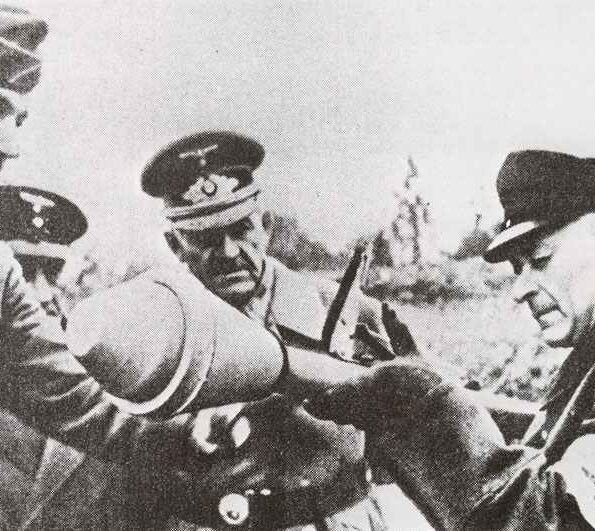
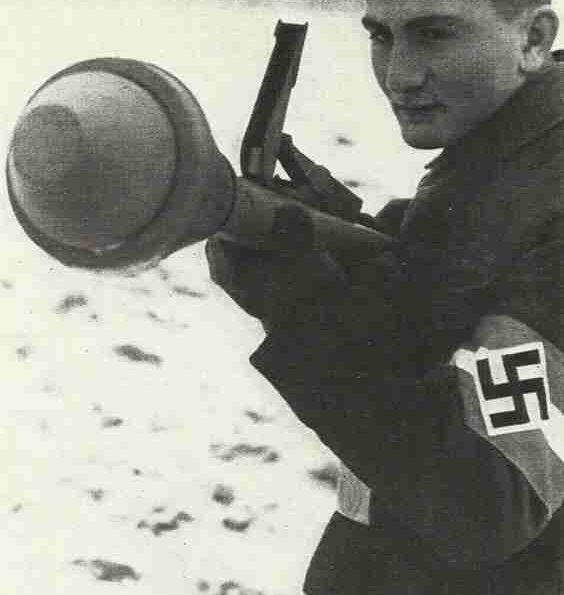
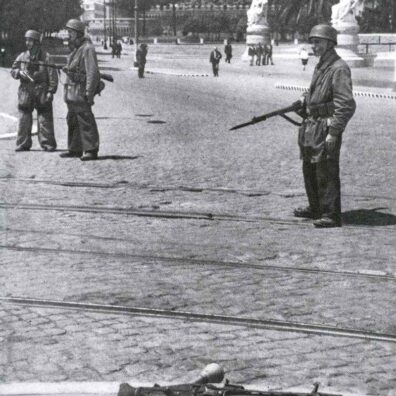
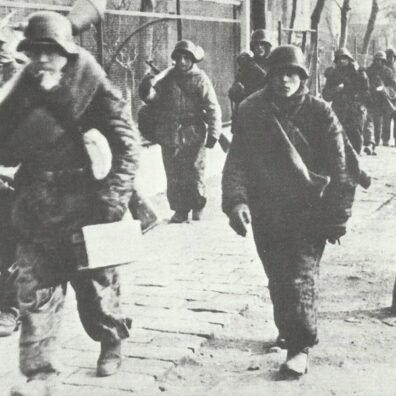
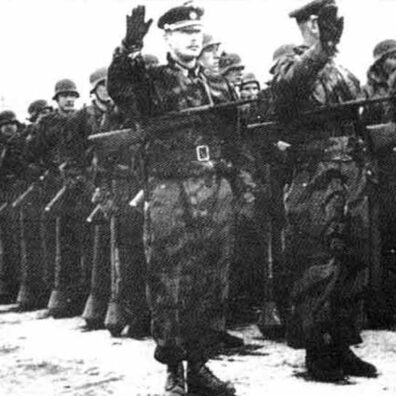
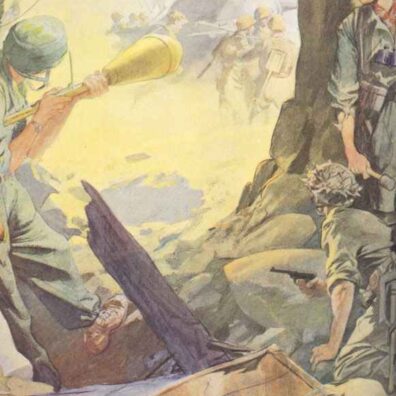
Finally, a Panzerfaust 250 was in the process of development when the war ended. This was to use a bomb with a longer tail shaft and an improved propelling charge electrically ignited. The general arrangement had been designed and experiments with the propellant system were taking place, but that was as far as it got.
A general description of the Panzerfaust 60 will suffice to describe all the other models which saw service. The basic portion was a mild steel tube with a slight restriction in the rear end to serve as a venture nozzle, and a simple trigger mechanism and rear sight unit on top. The bomb was of thin sheet metal on a wooden tail rod which carried the flexible fins. The propelling charge was in a paper tube behind the bomb and beneath the trigger unit. The foresight was a pin on the edge of the bomb warhead. To fire, the safety pin locking the trigger was withdrawn and the rear sight leaf erected; this had three apertures for 30, 60 and 80 meters. Lifting the sight leaf also freed the trigger. The user now tucked the tube beneath his arm and took aim at the target, squeezing the trigger downward to fire. This lifted and released a leaf spring carrying a small firing pin, allowing it to snap down on to a percussion cap which ignited the charge and expelled the bomb.
It seems to be customary in recent war novels to write off the Panzerfaust as a primitive and ineffective piece of rubbish issued to Volkssturm (German Home Guard) units in the last days of the war. This was far from the truth; it was a highly effective anti-tank weapon and it was widely used by the Army both on the Eastern and Western Fronts.
The extremely high tank losses of the Soviets in the last months of the Second World War (which significantly exceeded even the highest Russian production figures at that time) in the battle for German cities are most likely due to the constantly increasing use of the Panzerfaust. According to Soviet information, during the last battles inside Berlin, some 700 Red Army tanks were destroyed by the Panzerfaust alone.
In the hands of a determined man, it could stop any tank in existence in those days. It could still make an impression today.
Animated 3D model of Panzerfaust
Specifications for Panzerfaust 60
Specifications:
Panzerfaust 60 | specification |
|---|---|
Type | one-shot, recoilless anti-tank launcher |
Caliber | 28 mm (Panzerfaust 30) |
Length | 31.5 in tube, 19.5 in bomb |
Diameter, bomb | 5.9 in |
Projectile and weight | Hollow charge, 7.05 lb |
Weight complete | 15 lb |
Velocity | 148 ft/sec |
System of operation | one shot launcher, recoilless |
Effective range | 60 m |
Penetration | 200 mm at 30° |
Service statistics:
Panzerfaust 60 | figures |
|---|---|
Production delivery | October 1943 (Panzerfaust 30), summer 1944 (60), November 1944 (100), January 1945 (150) |
Final delivery | April 1945 |
Production figure 1943 | c. 500,000 |
Production figure 1944 | c. 5,570,000 (404,000 in October; 1,186,000 in November; 1,280,000 in December) |
Production figure January and February 1945 | 2,056,000 (1,000,000 in January) |
Inventory October 1944 | 1,019,000 |
Inventory November 1944 | 998,000 |
Inventory December 1944 | 1,717,000 |
Inventory January 1945 | 2,054,000 |
Inventory February 1945 | 2,508,000 |
Inventory March 1945 | 3,018,000 |
Destroyed Russian tanks in close combat, Eastern Front January to April 1944:
knocked-out Russian tanks
Weapon | January | February | March | April |
|---|---|---|---|---|
Panzerfaust | 58 | 45 | 51 | 110 |
9 | 24 | 29 | 26 |
|
Anti-tank grenade (Hohlladung) | 21 | 13 | 14 | 19 |
6 | 5 | 5 | 6 |
|
T-Mines | 20 | 4 | 43 | 11 |
Combat Pistol | - | - | 1 | - |
References and literature
The Encyclopedia of Infantry Weapons of World War II (Ian V.Hogg)
Infanterie im 2. Weltkrieg (J.B.King, John Batchelor)
The Encyclopedia of Weapons of World War II (Chris Bishop)



